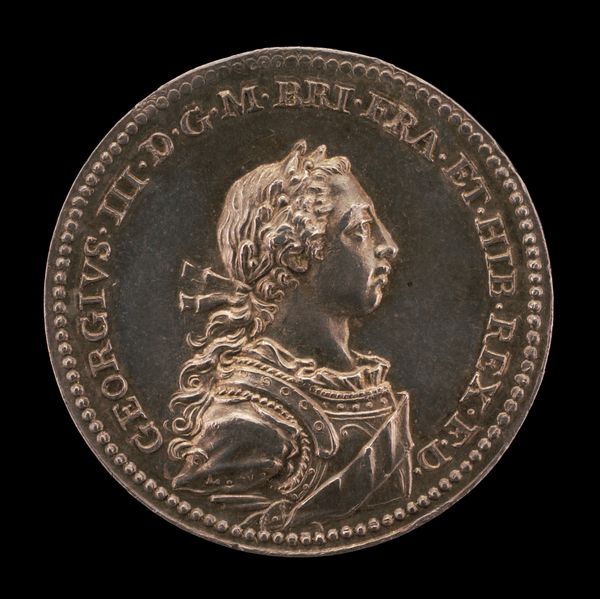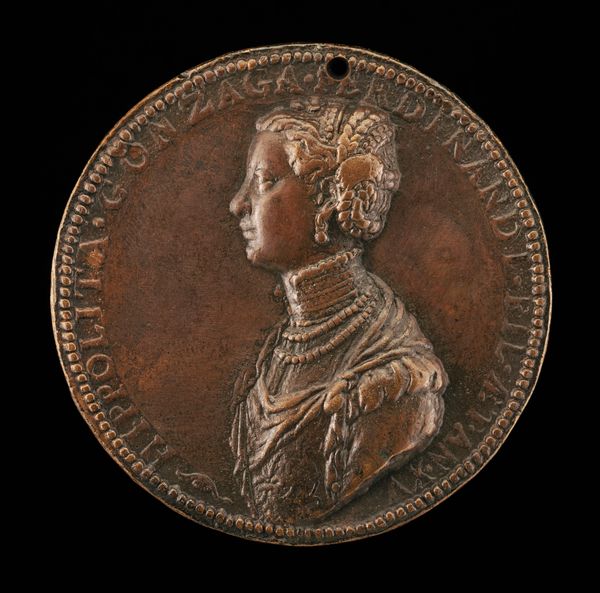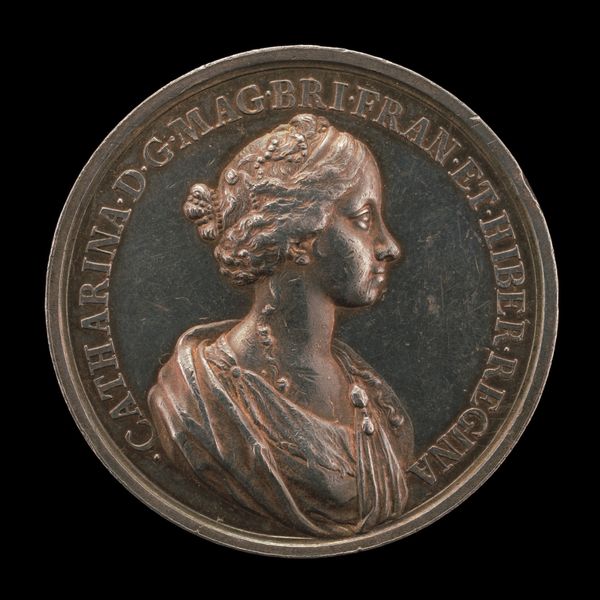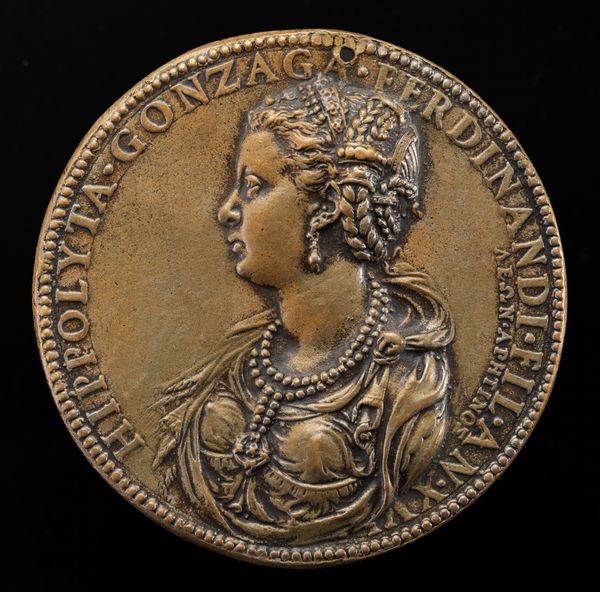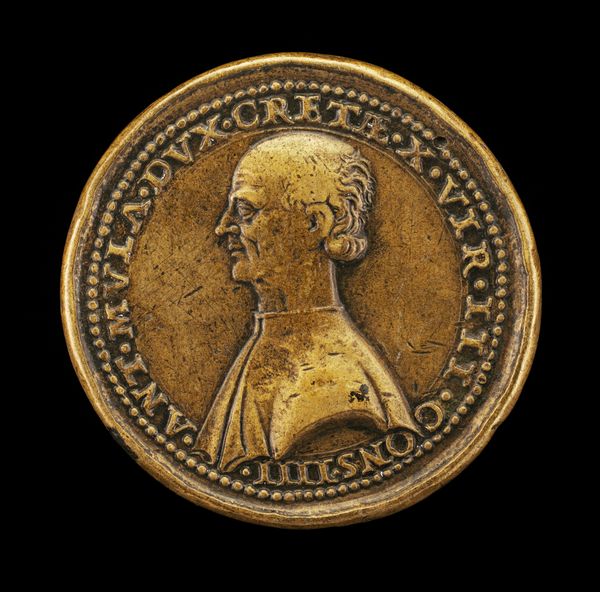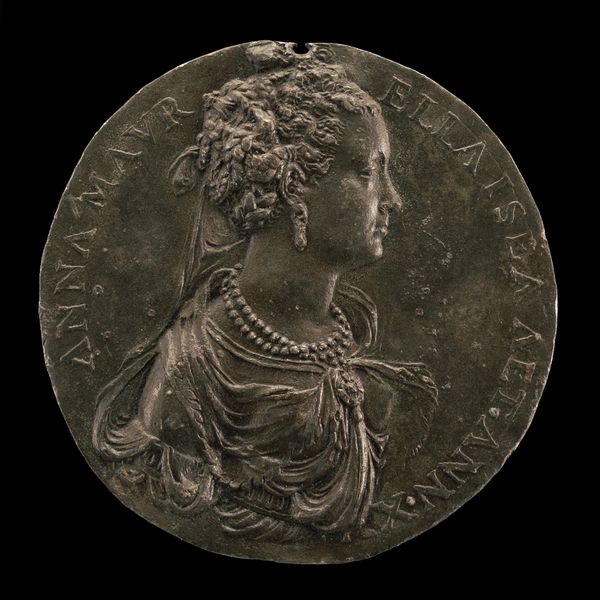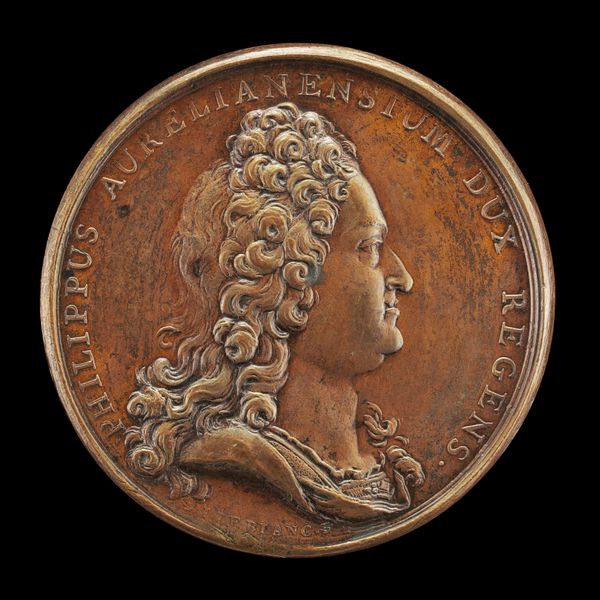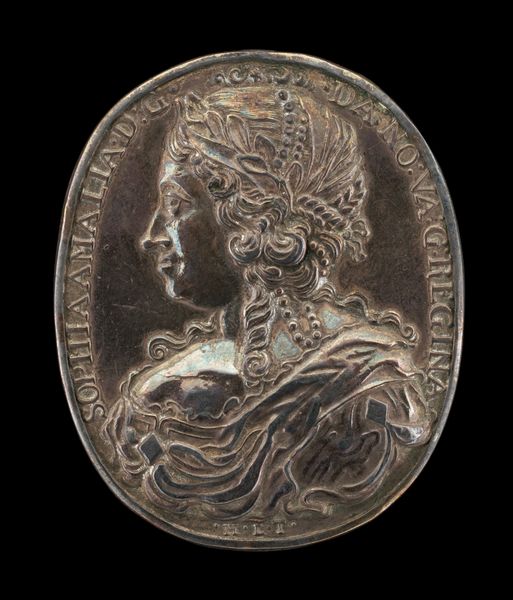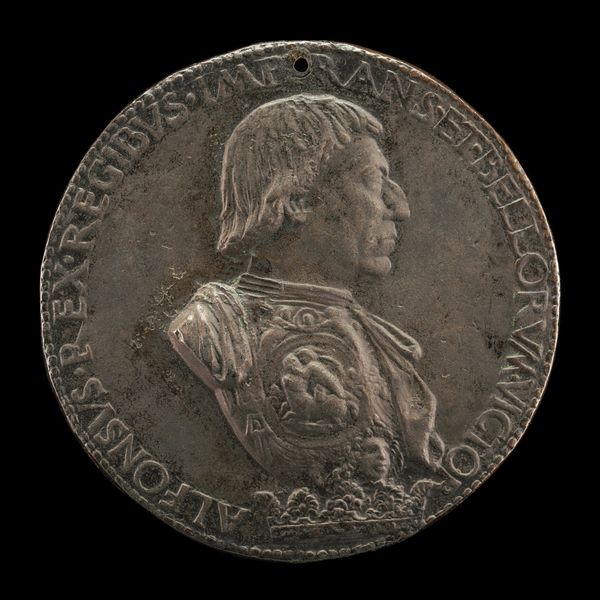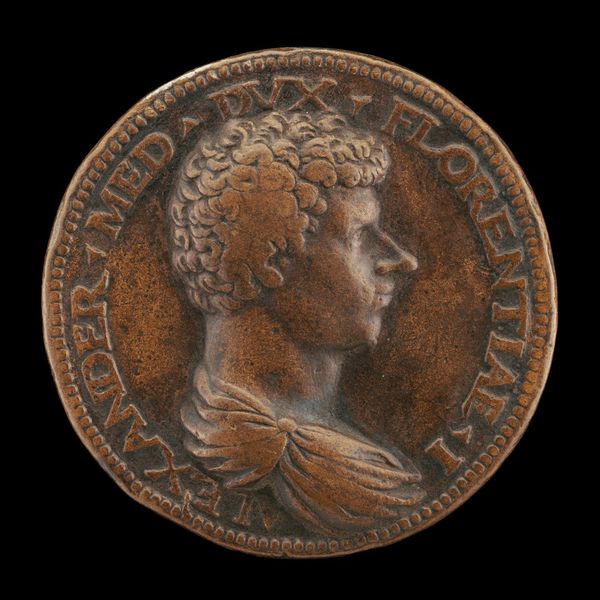![Coronation of Queen Charlotte [obverse] by Johann Lorenz Natter](/_next/image?url=https%3A%2F%2Fd2w8kbdekdi1gv.cloudfront.net%2FeyJidWNrZXQiOiAiYXJ0ZXJhLWltYWdlcy1idWNrZXQiLCAia2V5IjogImFydHdvcmtzLzBhOWE0MmQ0LTBmNjktNDViZi04ZjJlLTRlNjczNTM0MThkMC8wYTlhNDJkNC0wZjY5LTQ1YmYtOGYyZS00ZTY3MzUzNDE4ZDBfZnVsbC5qcGciLCAiZWRpdHMiOiB7InJlc2l6ZSI6IHsid2lkdGgiOiAxOTIwLCAiaGVpZ2h0IjogMTkyMCwgImZpdCI6ICJpbnNpZGUifX19&w=3840&q=75)
silver, metal, relief, sculpture
#
portrait
#
medal
#
neoclacissism
#
silver
#
metal
#
sculpture
#
relief
#
sculpture
Dimensions: overall (diameter): 3.45 cm (1 3/8 in.) gross weight: 17.66 gr (0.039 lb.) axis: 6:00
Copyright: National Gallery of Art: CC0 1.0
Editor: Here we have Johann Lorenz Natter’s silver medal, "Coronation of Queen Charlotte," created in 1761. The profile portrait is so formal, and almost serene. What stands out to you in this piece? Curator: For me, it's about how this small object participated in constructing and disseminating a specific image of Queen Charlotte at a crucial moment, her coronation. Consider the power dynamics inherent in commissioning and distributing these medals. Who controlled that narrative? Editor: So, it's more than just a portrait; it's a piece of political communication? Curator: Absolutely. Look at the Neoclassical style. The deliberate references to Roman portraiture wasn’t just about aesthetics. It invoked ideals of power and virtue, drawing a parallel between Charlotte and powerful rulers of the past. Do you see the inscription encircling her? Editor: Yes, it's an abbreviation I don't quite recognize, but surrounds the portrait almost like a halo. Curator: Exactly, and think about where these medals ended up: in the hands of dignitaries, collectors, perhaps even the general public. Each impression reinforces that carefully curated image. How effective do you think it was? Editor: I suppose seeing her represented in this way everywhere could solidify her image, though it feels a little impersonal and manufactured. It's fascinating how art, even in this small format, can be used as a tool for shaping public perception. Curator: Precisely. And studying it makes us more conscious of those image-making processes that continue to this day. What do you take away? Editor: I never considered the political implications of something so small and seemingly celebratory! I’ll definitely pay more attention to how power influences artistic creation and distribution. Thank you.
Comments
No comments
Be the first to comment and join the conversation on the ultimate creative platform.
